drones

As an antidote to all the stories of killing by drone, I’ve been collecting stories of the good things unpiloted aircraft can potentially do, or are already doing. Many are tasks now being carried out by piloted airplanes and helicopters, but drones bring advantages. They can fly higher, can stay in the air longer, and can fly in more dangerous terrain or situations with no risk to pilots.
Here are 10 things.
1. Monitoring crop watering. “A researcher from Ohio State University envisions the day — less than a decade from now — when a farmer waters the crops then launches an unmanned aerial vehicle to monitor precisely where the water went.” (Dayton Daily News)
2. Acting as lifeguards for beaches. “Surf Life Saving Australia says unmanned aerial drones will patrol some Queensland beaches this summer. … the drones, which have a wingspan of one metre, use cameras to search for swimmers in distress. … the drones will be fitted with flotation buoys that can be dropped down to the ocean.” (Australian Broadcasting Corporation)
3. Monitoring endangered species. “For the past few months, drones have been flying over the tropical forests of south-east Asia to map endangered species. A dozen of these unmanned aircraft, fitted with a video camera and an autopilot, have been deployed and will be joined by several more.” (Guardian)
WHEN AMBASSADOR Chris Stevens and other embassy staff were killed in Benghazi in September, it struck close to home for us at Sojourners. The last time a U.S. ambassador was slain was in 1979, when Adolph Dubs, the American ambassador to Afghanistan, was kidnapped by Islamic extremists and later killed. His daughter, Lindsay Dubs, was Sojourners’ managing editor. The degrees of separation between world events and the home front are often slim.
Some attributed last month’s violence in the Middle East to “fanaticism,” a “blind and tragic barbarism” by “imbeciles.” Others used words such as “beyond pathetic,” “fringe,” and “extremists.”
Those descriptions were applied to both those who created the anti-Islam video that provided the spark, and those who used the hateful video as a reason, or excuse, to engage in violent protests against the United States and the “West,” including Israel.
The media repeatedly summarized the cause of the violence as resting in the intentionally offensive video, and said that Muslims, angered by the blasphemous depiction of the Prophet Muhammad, rioted in a blind and uncontrollable rage. Moustafa Bayoumi, writing for the Middle East Research and Information Project, described the process: “Islamophobes provoke. Too many Muslims respond. Non-Muslims believe Muslims are crazy. Muslims are told the West hates them, and the Islamophobic right sleeps well at night with their cozy dreams of a mission accomplished.”

In a speech last week at the Woodrow Wilson Center in Washington, Yemen’s president Abed Rabbo Mansour Hadiexpressed his support for U.S. drone strikes in that country. According to the New York Times,
“They pinpoint the target and have zero margin of error, if you know what target you’re aiming at,” said Mr. Hadi, a former army officer and the successor to Ali Abdullah Saleh, who stepped down after protests against his three-decade rule.
The United States “helped with their drones because the Yemeni Air Force cannot carry out missions at night,” he said. “The electronic brain’s precision is unmatched by the human brain.”
In an interview with reporters and editors from the Washington Post, Hadi said that he personally approves all drone strikes in Yemen. According to the piece:
“Every operation, before taking place, they take permission from the president,” Hadi said in an interview with reporters and editors from The Washington Post in his hotel suite in the District. …
“Hadi’s comments mark the first time he has publicly acknowledged his direct role in a campaign of strikes by U.S. drones and conventional aircraft targeting an al-Qaeda franchise that is seen as the most potent terrorist threat to the United States.”
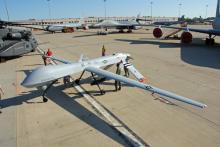
People of Jesus work against demons — against the forces of evil that eat away at the goodness of God, the wonder of creation, the life of God in the world. Demonic forces roam the world, corrupting minds and bodies, cultures and governments, trying to bring ruin upon all that is good and beautiful. They dehumanize, devastate, and destroy life.
Weaponized drones are demons: evil spirits of the air, specters in the heavens, shadowy presences. They are forces of evil in heavenly places, triggering mental anxiety and bodily harm, instigating psychological damage and death, raining down terror and trauma.
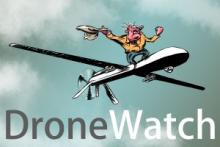
Researchers at Stanford University and New York University law schools released a major study on the U.S. use of drones in Pakistan, commissioned by a London-based human rights group Reprieve. The study, Living Under Drones, took nine months to complete, including two trips to Pakistan and more than 130 interviews with victims, witnesses and experts. The Bureau of Investigative Journalism is cited in the report for “the best currently available public aggregate data on drone strikes.”
The four major conclusions of the study, highlighted in its executive summary, are:
“First, while civilian casualties are rarely acknowledged by the US government, there is significant evidence that US drone strikes have injured and killed civilians.
“Second, US drone strike policies cause considerable and under-accounted-for harm to the daily lives of ordinary civilians, beyond death and physical injury. Drones hover twenty-four hours a day over communities in northwest Pakistan, striking homes, vehicles, and public spaces without warning. Their presence terrorizes men, women, and children, giving rise to anxiety and psychological trauma among civilian communities.
“Third, publicly available evidence that the strikes have made the US safer overall is ambiguous at best. The strikes have certainly killed alleged combatants and disrupted armed actor networks. However, serious concerns about the efficacy and counter-productive nature of drone strikes have been raised. The number of “high-level” targets killed as a percentage of total casualties is extremely low—estimated at just 2%.
“Fourth, current US targeted killings and drone strike practices undermine respect for the rule of law and international legal protections and may set dangerous precedents. This report casts doubt on the legality of strikes on individuals or groups not linked to the terrorist attacks of September 11, 2011, and who do not pose imminent threats to the US.”
You can read the entire report, along with data, victim’s stories, and resources.
News stories on the study include BBC, Guardian, Chicago Tribune/Los Angeles Times, and CNN.
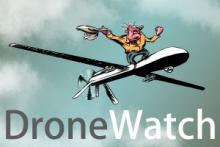
In the second attack in three days, a drone attack late Monday in northwest Pakistan killed five militants, including two linked to al Qaeda. DAWN reports
“Two key al Qaeda linked operatives, including an operational commander have been killed in Monday’s US drone strike in North Wazirsitan Agency, official sources said.
“The al Qaeda linked militants killed in the drone strike have been identified as Abu Kasha Al-Iraqi and Saleh Al-Turki, an intelligence source told Dawn.Com.
“Abu Kasha Al-Iraqi, hailing from Iraq, had arrived in North Waziristan Agency in 2001 and had since been one of the key operational commanders of the al Qaeda in North Waziristan tribal region, intelligence officials said.”
The Associated Press and Agence France Presse carried earlier reports of the story, before the identifications were made.
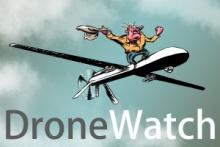
Al Jazeera reports:
“At least three people have been killed in a suspected US drone attack in Pakistan's northwestern region along the Afghan border, according to a Pakistani security official.
“The target of Saturday’s attack was a vehicle in Dattakhel area in North Waziristan, one of seven tribal districts and hotbed of al-Qaeda-linked fighters. All three people travelling in the car were killed and the vehicle completely destroyed, the security official said on condition of anonymity.”
The attack was also reported in Pakistani newspapers DAWN and The Nation.
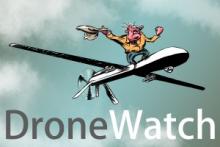
AP Intelligence Writer Kimberly Dozier reports
“WASHINGTON (AP) - The U.S. is sending more spies, Marines and drones to Libya, trying to speed the search for those who killed the U.S. ambassador and three other Americans, but the investigation is complicated by a chaotic security picture in the post-revolutionary country, and limited American and Libyan intelligence resources. The CIA has fewer people available to send, stretched thin from tracking conflicts across the Middle East, Africa and Asia.”
…
“To fill in the gaps in spies on the ground, the U.S. intelligence community has kept up surveillance over Libya with unmanned and largely unarmed Predator and Reaper drones, increasing the area they cover, and the frequency of their flights since the attack on the consulate, as well as sending more surveillance equipment to the region, one official said.”
“Largely unarmed?”

The Associated Press reports
“BENGHAZI, Libya (AP) — U.S. drones hovered over the eastern city of Benghazi on Friday and militia forces fired toward the crafts, prompting authorities to close the airport for several hours for fear a commercial aircraft could be hit, Libyan officials said.
“Abdel-Basit Haroun, the head of the militia in charge of city security, said the drones could easily be spotted from the ground. He says men angry over perceived foreign intervention fired in the air and authorities closed the airport.
"The drones are like bees," he said, referring to the long hours the drones were seen, with their buzzing noise heard in different neighborhoods of Benghazi. Militias, known as brigades, fought regime forces during Libya's eight-month civil war that led to Moammar Gadhafi's fall last year. Since then, many have roles in keeping security, though they have not been integrated into government forces.
“An airport official confirmed the firing on the drones was the reason for the airport shutdown.”

Micah Zenko, at the Council on Foreign Relations blog, points to a recently declassified report from the Government Accountability Office (GAO) on the spread of drones. The report, Agencies Could Improve Information Sharing and End-Use Monitoring on Unmanned Aerial Vehicles, finds:
“Since 2005, the number of countries that acquired an unmanned aerial vehicle (UAV) system nearly doubled from about 40 to more than 75. In addition, countries of proliferation concern developed and fielded increasingly more sophisticated systems. Recent trends in new UAV capabilities, including armed and miniature UAVs, increased the number of military applications for this technology. A number of new civilian and commercial applications, such as law enforcement and environmental monitoring, are available for UAVs, but these applications are limited by regulatory restrictions on civilian airspace.
“The United States likely faces increasing risks as countries of concern and terrorist organizations seek to acquire UAV technology. Foreign countries’ and terrorists’ acquisition of UAVs could provide them with increased abilities to gather intelligence on and conduct attacks against U.S. interests. For instance, some foreign countries likely have already used UAVs to gather information on U.S. military activities overseas. Alternatively, the U.S. government has determined that selected transfers of UAV technology support its national security interests by providing allies with key capabilities and by helping retain a strong industrial base for UAV production. For instance, the United Kingdom and Italy have used UAVs purchased from the United States to collect data on Taliban activity in Afghanistan.”
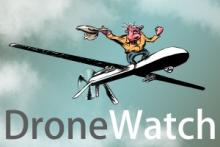
In a lecture Thursday evening at Drake University in Des Moines, Iowa, former President Jimmy Carter included drone killings in a list of human rights violations. The Muscatine Journal reported:
“Former President Jimmy Carter said Thursday that America is engaging in — and its citizens are accepting — human rights violations that “would never have been dreamed of” before the terrorist attacks that occurred in this country 11 years ago.
“The nation’s 39th president said the U.S. government under both Republican and Democratic administrations has violated 10 of 30 provisions set out in a universal declaration of human rights that was forged after World War II, including perpetually detaining people in prison without informing them of any charges, providing them access to legal counsel or bringing them to trial and, more recently, by killing people via the use of unmanned drones.
“We have now decided as a nation that it’s OK to kill people without a trial with our drones, and this includes former American citizens who are looked upon as dangerous to us,” Carter told a group of Drake University students involved in a social-justice learning program.”
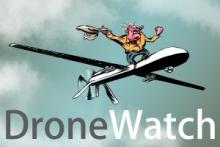
During the Libyan revolution, U.S. drones were a significant part of the NATO forces involved, carrying out nearly 150 attacks. But when the conflict ended, the drones stayed. CNN reported in June:
“A senior Libyan official told CNN that the U.S. is flying surveillance missions with drones over suspected jihadist training camps in eastern Libya because of concerns over rising activity by al Qaeda and like-minded groups in the region but said that to the best of his knowledge, they had not been used to fire missiles at militant training camps in the area.”
Following yesterday’s attack in Benghazi that killed U.S. Ambassador Chris Stevens and three other Americans, President Obama declared that the killers would be found and that “justice will be done.”
CNN reported today on the military role in that "justice:"
The Pentagon dispatched a contingent of Marines to Libya, moved warships toward its coast, and planned to use drones in a stepped up search for those responsible for an attack on a U.S. consulate that killed the American ambassador and three others.”
A “senior military official” provided more details on the planned use of drones
“American drones also were expected to join the hunt for potential targets. They would be part of "a stepped-up, more focused search" for a particular insurgent cell that may have been behind the attack, the official said. The unmanned surveillance aircraft are expected to fly over Benghazi and other areas of eastern Libya to look for militant encampments.”
And, while the reports now are only of surveillance, an educated guess would suggest that the drones are (or soon will be) armed, and that missiles will likely be fired.

As the number of drone attacks on Pakistan and Yemen continue to increase, protests against them are growing.
On Sunday, some 40 people gathered to protest near the New York Air National Guard headquarters at Hancock Field in DeWitt, N.Y. The Syracuse Post-Standard reported
“The group Upstate Coalition to Ground the Drone and End the Wars chose Sunday for its event because the 174th Fighter Wing at Hancock was changing its name to 174th Attack Wing, which reflects the change in mission at the base from flying fighter aircraft to MQ-9 remotely piloted aircraft.”
On Monday, two activists were convicted in federal court for trespassing at Whiteman Air Force Base in Missouri while protesting the use of drones. The Associated Press reported
“Retired minister Ron Faust of suburban Kansas City and Brian Terrell, a member of the Catholic Worker Movement from Maloy, Iowa, were among a group of 40 protesters who demonstrated at the air base in mid-April. They were arrested after entering a restricted area without permission.”
…
“We were there not to commit a crime, but to prevent one,” Terrell said, describing seeing in person a 9-year-old girl in an Afghani refugee camp missing an arm from what he said was a wayward drone strike. … Faust, a 69-year-old retired Disciples of Christ minister, compared drone strikes to ‘premeditated murder’ that cheapen the value of human life by allowing shooters to be as detached from their targets as video game players.”

U.S. drones continue to hammer Yemen today. Reuters reports an attack this morning
A U.S. drone strike killed six suspected Islamist militants in eastern Yemen on Wednesday, a security official said, the latest sign of a Washington-backed campaign against al Qaeda-linked fighters in the impoverished country. The drone fired eight missiles at a house where fighters were thought to be hiding in the Wadi al-Ain area of Hadramout province, a witness told Reuters. Eight people managed to escape, the witness added.
Meanwhile, the attack on Sunday that killed 14 civilians is now being investigated as coming from a drone. Initially, the strike was said to have come from Yemeni planes, although the Yemen Post and Al Jazeera reported sources saying it was a drone. On Monday, CNN quoted “three security officials” calling it a U.S. drone. Today, AFP reports
Yemeni authorities have sent tribal representatives to investigate civilian deaths in an apparent US drone strike targeting an Al-Qaeda commander, one of them told AFP on Tuesday. Three women and a child were among 14 people killed in Sunday's strike near the town of Radaa, 130 kilometres (80 miles) southeast of Sanaa, targeting Al-Qaeda's Abdelrauf al-Dahab who escaped unharmed, local officials said.
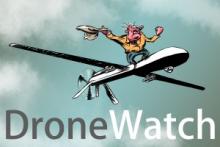
The Bureau of Investigative Journalism has released its monthly report on covert actions in Pakistan, Yemen, and Somalia.
Pakistan: August sees the highest number of CIA strikes in Pakistan since October 2011. A number of senior militants are killed along with at least two named civilians.
July 2012 actions
Total CIA strikes in August: 7
Total killed in strikes in August: 29-65, of whom at least 2 were reportedly civilians
For the Bureau’s full Pakistan databases click here.
Yemen: At least 26 people are killed in five confirmed US drone strikes in Yemen. This is still less than the May peak. Civilian casualties are confirmed for the first time since May.
August 2012 actions
Confirmed US drone strikes: 5
Further reported/possible US strike events: 1
Total reported killed in US operations: 26-33
Civilians reported killed in US strikes: 2
Click here for the full Yemen data.
Somalia: For the fourth month no US military actions are reported in Somalia.

U.S. drones are having a busy weekend, killing people in both Pakistan and Yemen.
On Saturday, an attack in Pakistan is reported to have killed six people. Pakistan’s The Nation reports that “A U.S. drone strike targeting a compound on Saturday killed at least six suspected militants in North Waziristan’s Datta Khel tehsil bordering Afghanistan.” DAWN newspaper added that “six drones flying low in Dattakhel fired four rockets on a vehicle and a house.”
On Sunday, AP reported a strike in Yemen killed five people, including a top al-Qaida militant wanted for allegedly masterminding a 2002 attack on a French oil tanker.
In a separate attack, 14 civilians were killed when a disputed strike hit two cars. In the same story, AP reported:
“Yemeni fighter planes mistakenly hit vehicles carrying civilians traveling south of the capital, killing 14. Military officials said the airstrikes in Radda in the province of Bayda were based on faulty intelligence that the passengers were al-Qaida members. Missiles fired from the warplanes hit two vehicles carrying local residents returning to their villages. Tribesman Sheik Ahmed Ali said the dead included three women and three children.”
The Yemen Post, however, cites “local sources” saying the attack was by a U.S, drone. Al Jazeera, citing officials and local tribal leaders, also reported the attack as a drone strike. Bloomberg, citing an “independent Yemeni news website,” reported that “it wasn’t clear whether the strike was launched from a U.S. drone or a Yemeni warplane.”
Either way, 14 civilians are dead due to faulty intelligence. Ultimately, that is more important than the source of the missiles that killed them.
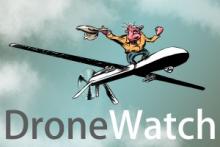
Last week was drone week in Pakistan, this week it’s Yemen. Two deaths were reported in an attack on a car on Tuesday, at least four in another car on Wednesday, and another attack today that killed eight. Reuters reports:
“Eight Islamist militants were killed by a U.S. drone strike on Friday in a remote part of Hadramout, a Yemeni official said, the third such strike in the eastern Yemeni province this week.
Yemen's defense ministry said on its website that eight al Qaeda members were killed in an air strike on their vehicle in the isolated, desert district of Hawra. The local official, who declined to be named, said it was a drone strike.
The men were heavily armed, carrying machine-guns and explosives, the ministry said. The local official said the men were thought to have been on the way to carry out an attack.”
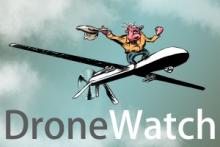
Reuters reports that a drone attack in central Yemen yesterday killed two suspected militants:
"Two men thought to be Islamist militants were killed in an apparent U.S. drone attack on a car in central Yemen on Tuesday, the defense ministry said.
A security source and witnesses told Reuters the car was hit on a remote road from Hadramout to Maareb province - a mostly desert southeastern region where militants have taken refuge after being driven from their southern strongholds last month.
It was not clear if there were other casualties in the attack. Washington, which fears the spread of militants in Yemen, has stepped up attacks by unmanned drones this year."
The Yemen Post reported a local website as quoting a security source saying that one of those killed was a Saudi militant, and that a second car managed to get away.
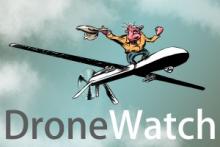
The Pakistan Foreign Office has formally protested this week’s drone strikes. DAWN, a leading Pakistani newspaper, reported today,
ISLAMABAD: Pakistan’s Foreign Office on Thursday summoned a senior American diplomat to protest against US drone strikes in the country’s troubled tribal areas bordering Afghanistan. According to a statement issued by the Foreign Office spokesman, the US Embassy in Pakistan was “démarched on recent drone strikes in North Waziristan.”
Pakistani officials told the diplomat, who was not identified, that the attacks were unacceptable, unlawful and a violation of the country’s sovereignty. “A senior US diplomat was called to the Ministry of Foreign Affairs and informed that the drone strikes were unlawful, against international law and a violation of Pakistan’s sovereignty,” said an official statement. “It was emphatically stated that such attacks were unacceptable.”
How much longer will the U.S. government be able to flout international law?

As international concern about U.S. targeted killings with drones rises, Ben Emmerson, UN Special Rapporteur on Human Rights and Counter-Terrorism, said Sunday that every drone strike should be impartially investigated. According to Common Dreams,
"Emmerson is preparing a report for the next session of the Human Rights Council in March covering the use of drone attacks, which have spiked since Obama's presidency.
He questioned the legality of the drone strikes and noted the growing global outrage over their use. ‘We can't make a decision on whether it is lawful or unlawful if we do not have the data. The recommendation I have made is that users of targeted killing technology should be required to subject themselves, in the case of each and every death, to impartial investigation. If they do not establish a mechanism to do so, it will be my recommendation that the UN should put the mechanisms in place through the Human Rights Council, the General Assembly and the Office of the High Commissioner.’”
This comes as a flurry of drone strikes along the Pakistan-Afghanistan border in the last four days have killed at least 18 people. Reuters reports that six people were killed in an attack on Saturday, five early on Sunday, and two more later on Sunday near the location of the previous strike. These attacks came as celebrations of the Eid al-Fitr festival, marking the end of Ramadan, were occurring. Tuesday, a further strike killed five, according to the Associated Press.
Mr. Emmerson’s call for investigations is an important step, one that will hopefully mark the beginning of the end for drones as killing machines.